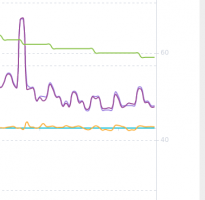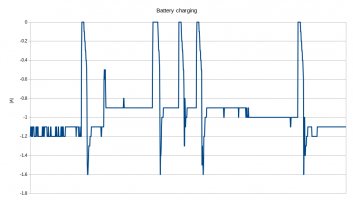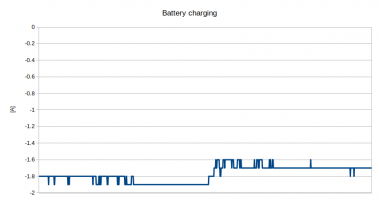I'm planning to investigate this problem, but this will require some changes in my setup. I will connect the Rasp Pi to the inverter's MODBUS port and log the data in real-time. Yesterday, after a full restart of the inverter, there is an improvement in its work:

This is a four-hour segment during the evening, and the grid consumption is zero. But during the day, the situation is like before. Anyway, this will need more attention.
I've checked a self-consumption from the battery in the off-grid mode, without any loads. At 360V, there are peaks of 130mA readings at multimeter, which give around a 45W peak. The average is lower, but I will need a more complicated setup to measure exactly.

This is a four-hour segment during the evening, and the grid consumption is zero. But during the day, the situation is like before. Anyway, this will need more attention.
I've checked a self-consumption from the battery in the off-grid mode, without any loads. At 360V, there are peaks of 130mA readings at multimeter, which give around a 45W peak. The average is lower, but I will need a more complicated setup to measure exactly.






